Avro 643 Cadet
in RAAF service
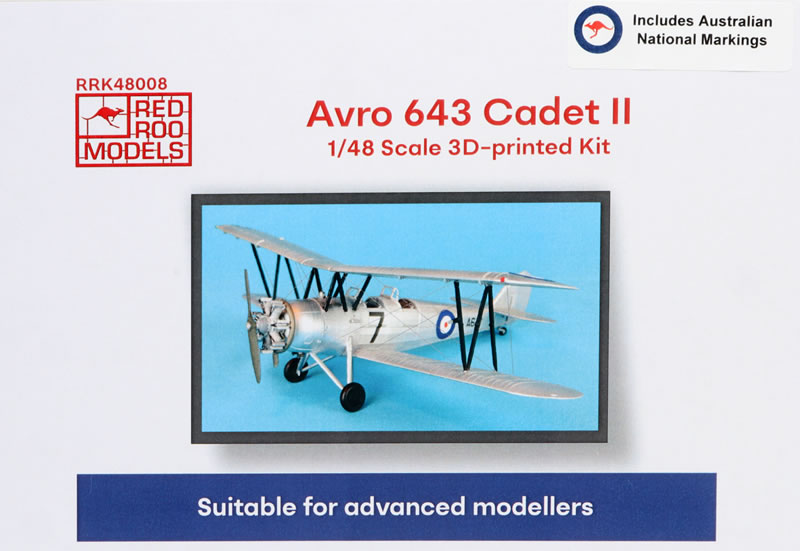
Red Roo Models, 1/48 scale
| S u m m a r y : |
Catalogue Number: |
Red Roo Models Kit No.RRK48008 - Avro 643 Cadet II in RAAF Service |
Scale: |
1/48 |
Contents and Media: |
30 parts in grey coloured 3d printed resin; two continual film digital decal sheets; comprehensive instructions (18 pages). |
Price: |
AUD$85.00 plus shipping available online from Red Roo Models |
Review Type: |
First Look |
Advantages: |
Interesting subject; high quality 3d printed parts; well detailed inside and out; clever and thoughtful parts breakdown (e.g. cabane struts and landing gear printed integrally onto the fuselage); temporary bracing on interplane struts to improve alignment and rigidity; good decals; excellent instructions. |
Disadvantages: |
BYO harness straps. |
Conclusion: |
Red Roo's 1/48 scale Avro 643 Cadet II in RAAF Service is an interesting offering that makes good use of its 3d printing technology.
The parts breakdown is quite clever and straightforward, making it suitable for modellers who have built only a few multimedia or biplane kits before. The marking schemes are colourful and varied too.
If you want a complete collection of RAAF aircraft in 1/48 scale, you are one step closer with Red Roo Models' 1/48 Avro 643 Cadet II in RAAF Service. |
Reviewed by
Brett Green

The Avro 631 Cadet was developed in 1931 as a smaller, more economical, derivative of the Tutor military trainer, for flying club or personal use. The first prototype, G-ABRS flew in October 1931. It was publicly unveiled at the opening of Skegness airfield in May 1932, although by this time, the first orders for the type, for the Irish Army Air Corps, had already been placed and the order for six Cadets delivered.
The Avro 631 Cadet was replaced in production in September 1934 by the improved Avro 643 Cadet, which had a revised rear fuselage with a raised rear seat, retaining the 135 hp (101 kW) Armstrong Siddeley Genet Major 1 engine of the Avro 631. In turn, this formed the basis for the more powerful Avro 643 Mk II Cadet; it was also strengthened and had improved parachute egress. This model entered service in 1935, and was built in the largest numbers, including 34 fitted with a tailwheel for the Royal Australian Air Force.
Operational History
The Cadet, while smaller and more economical than the Tutor, was still more expensive to run than competing two-seat light civil aircraft and was harder to hangar because of its lack of folding wings, so it was used mainly as a trainer for flying schools or the military. By far, the largest civil user was Air Service Training Ltd, which operated 17 Avro 631s at Hamble, together with a further four operated by its Hong Kong subsidiary, the Far East Aviation Co. Air Service Training also operated 23 Mk II Cadets, with both these and the earlier Cadets remaining in service with Reserve Training Schools run by Air Service Training until they were impressed as ATC instructional airframes in 1941.
The other major operator was the RAAF, which acquired 34 Mk II Cadets, delivered between November 1935 and February 1939. These remained in service until 1946, when the surviving 16 were sold for civil use. Two of these were re-engined in 1963 with 220 hp (160 kW) Jacobs R-755 engines for use as crop sprayers. In the UK, only two Cadets survived the war.*
This subject is particularly interesting to me as some Avro Cadets were based at Bankstown Airport, minutes from our old family home of nearly 30 years. I also learnt to fly at Bankstown airport but the Avro Cadets were long gone by then.
As late as the 1960s though, a Cadet shared space in close quarters alongside the Messerschmitt Bf 109 G-6 W.Nr 163824, hanging from the ceiling of Sid Marshall's hangar at Bankstown airport.
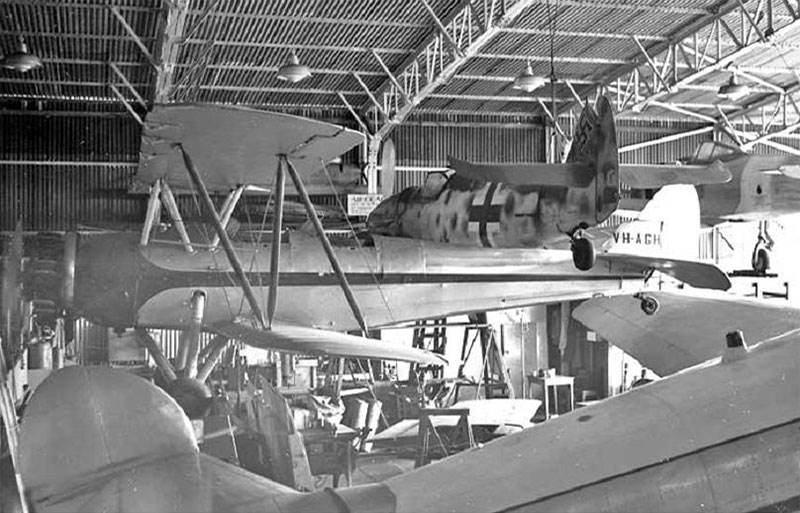
Red Roo Models has just released an all-new 1/48 scale Avro 643 Cadet II. I am not aware of any other 1/48 scale Avro Cadets in plastic.
Red Roo Models' 1/48 scale Avro 643 Cadet II in RAAF service comprises just 30 parts in grey coloured 3d printed resin, two continual film digital decal sheets and comprehensive instructions.
The 3d printed resin parts are good quality with excellent surface textures. The stretched fabric and rib tape effects look great.
The fuselage halves, wings and most of the other resin parts are ready to use almost straight from the box. There are no casting blocks for the main parts. You'll just need to clean up a few wisps of fine resin waste on the horizontal tailplanes.
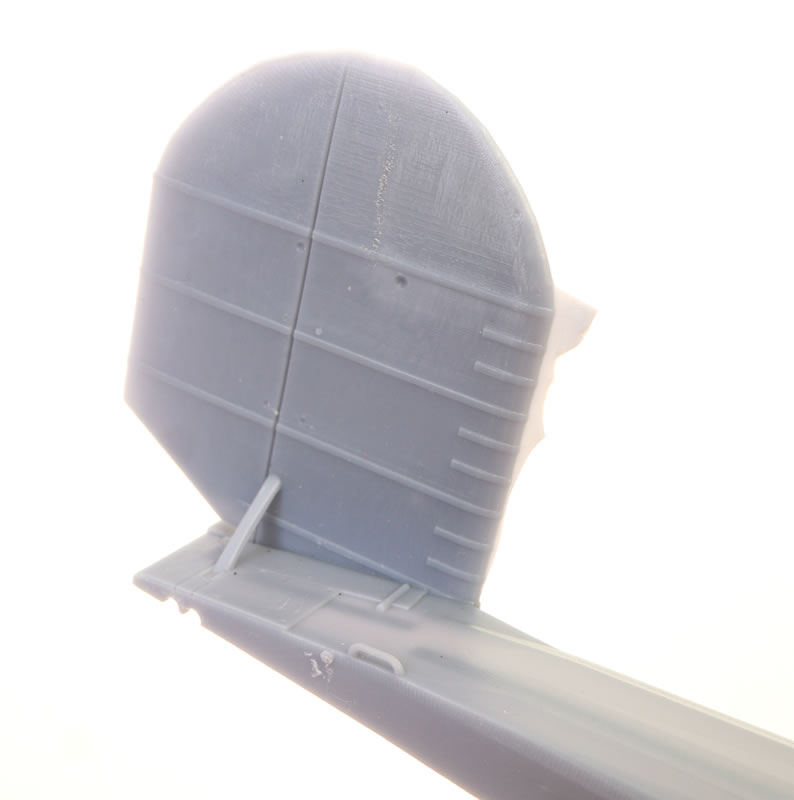
Red Roo is making the most of 3d printing technology here. I was particularly impressed with the fuselage halves. These come printed with the cabane struts, laanding gear struts and the horizontal tailplanes as one piece each.
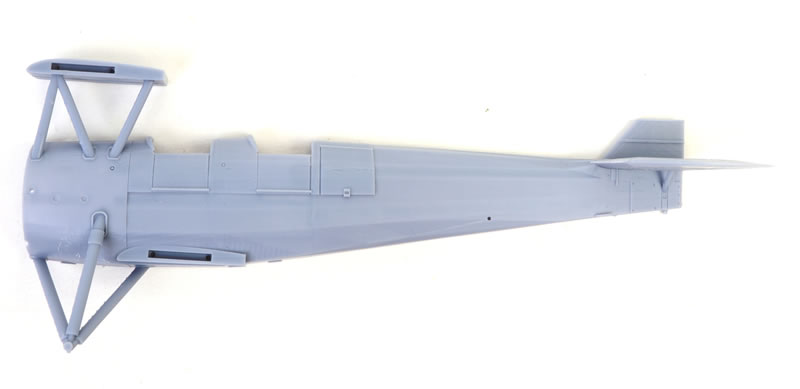
Interior structural detail is also present inside the fuselage.
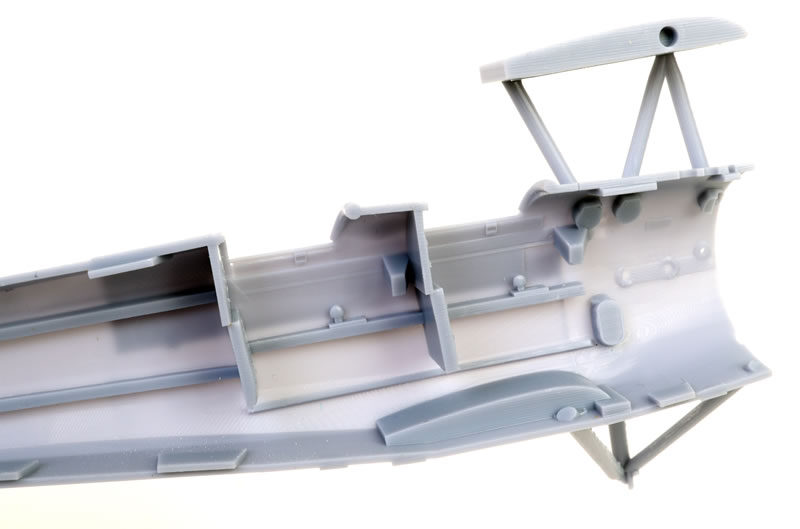
The fuselage benefits from locating tabs, pins and holes. I have test-fitted the fuselage halves and the wings and I cannot see any red flags so far.
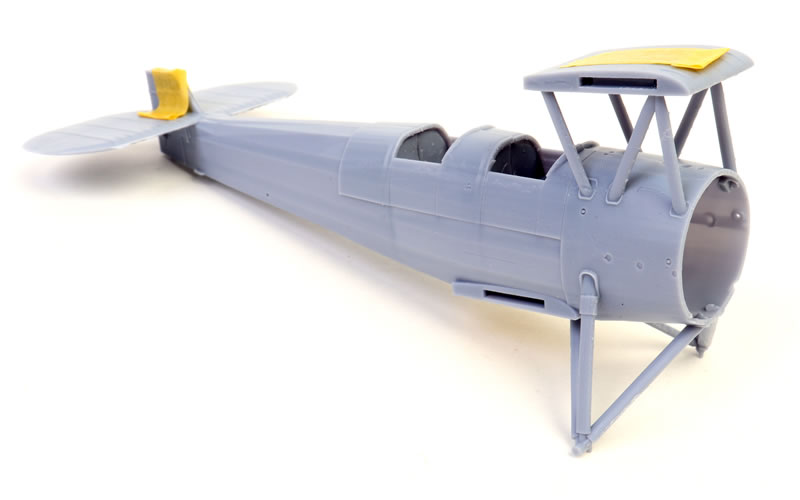
The wings are printed as four parts - port and starboard, upper and lower. Each wing part has a locating tab with a corresponding slot in the fuel tank (upper wings) and lower fuselage side (lower wings).
The wings also have nice deep locating holes for the interplane struts and rigging.
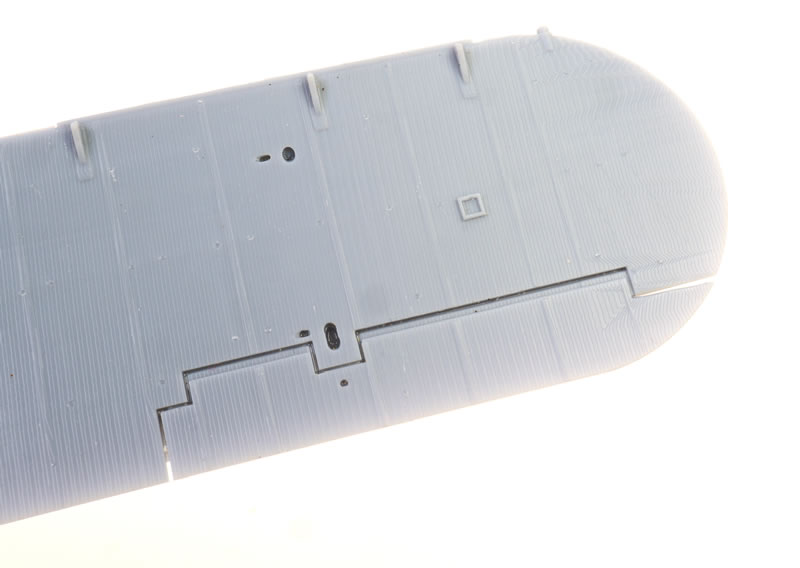
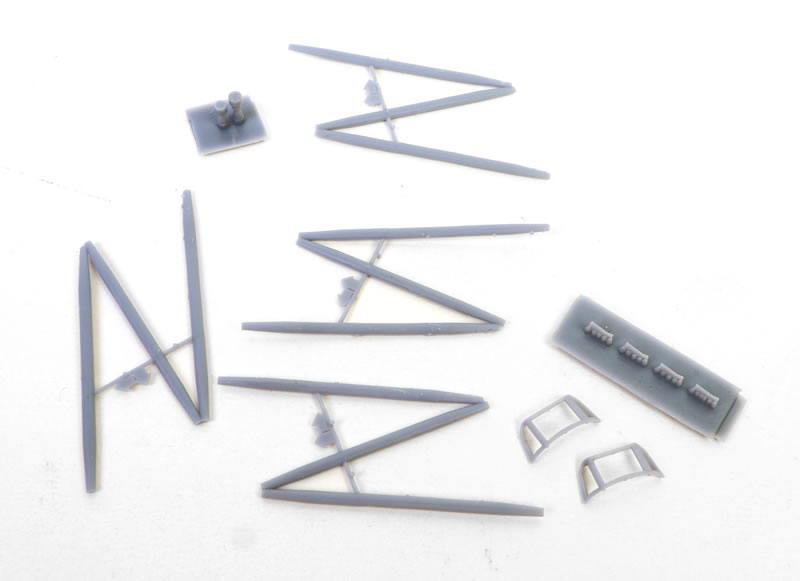
The horizontal tailplanes are printed directly to the rear fuselage.
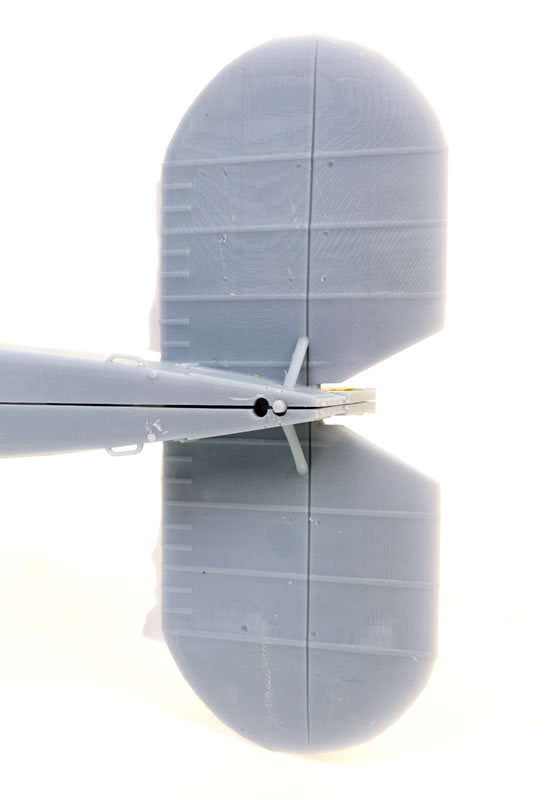
The rudder is a separate part with locating tabs.
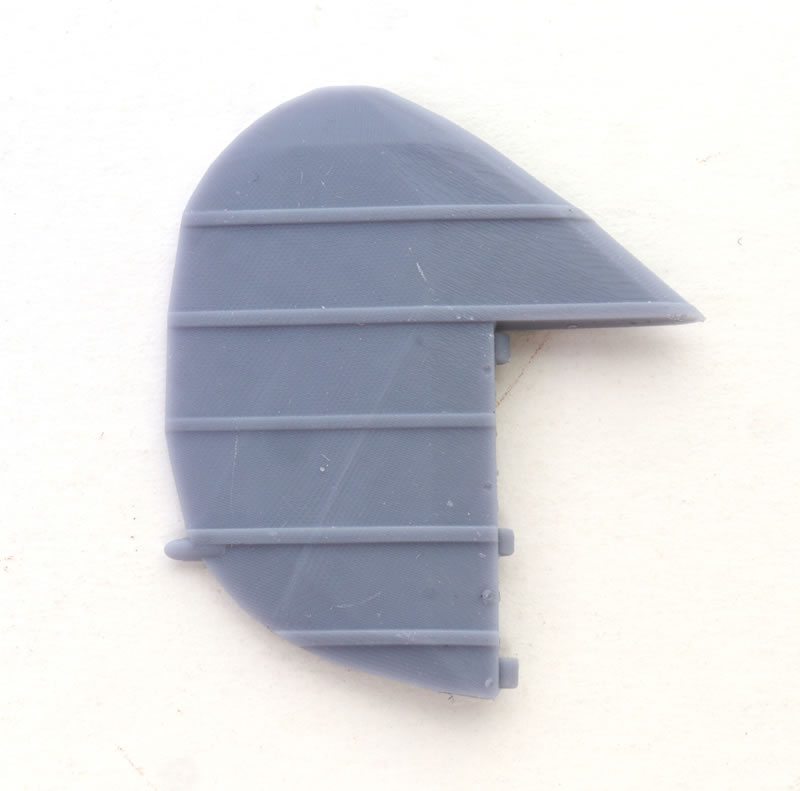
Interior detail is more than adequate with two seats, control sticks and detail moulded onto the floor, instrument panels, compass for the front and rear panels, communication tubes and throttles, plus sidewall structure cast to the inside of the fuselage sides.
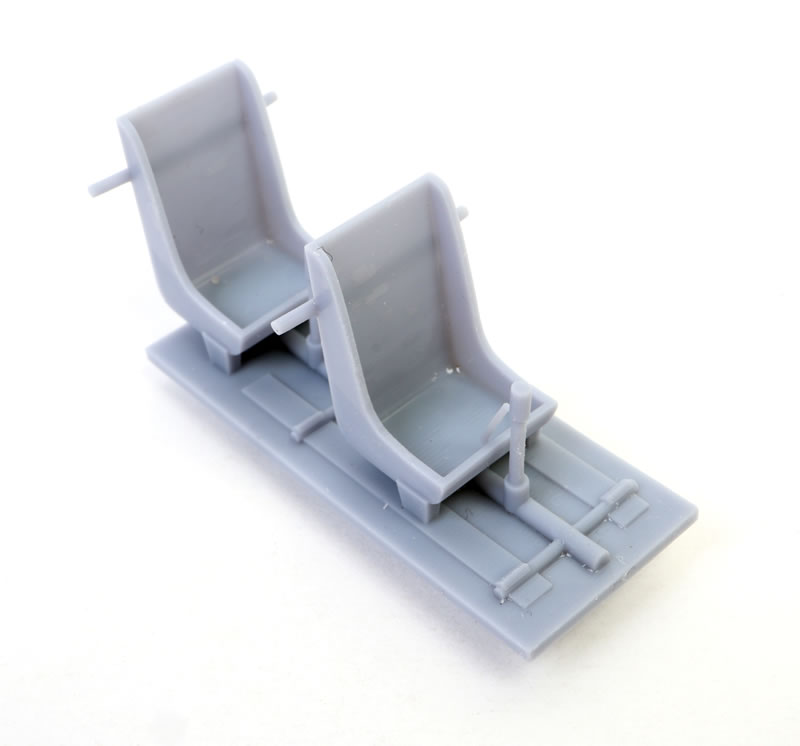
The instrument panels features raised bezels and rectangular shapes.
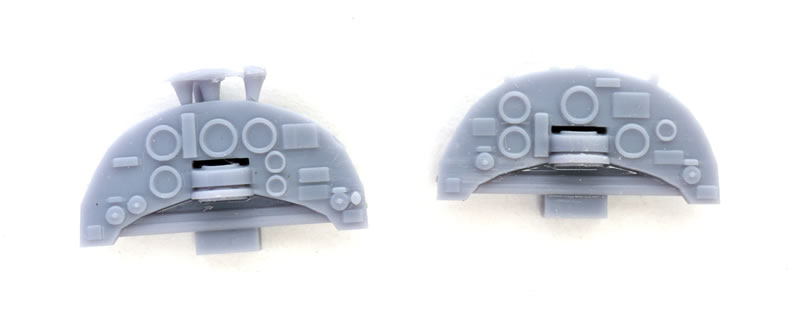
Two sets of instrument dials are on the kit decal sheet but you will have to source your own harness straps.

The propeller is presented as a single part.
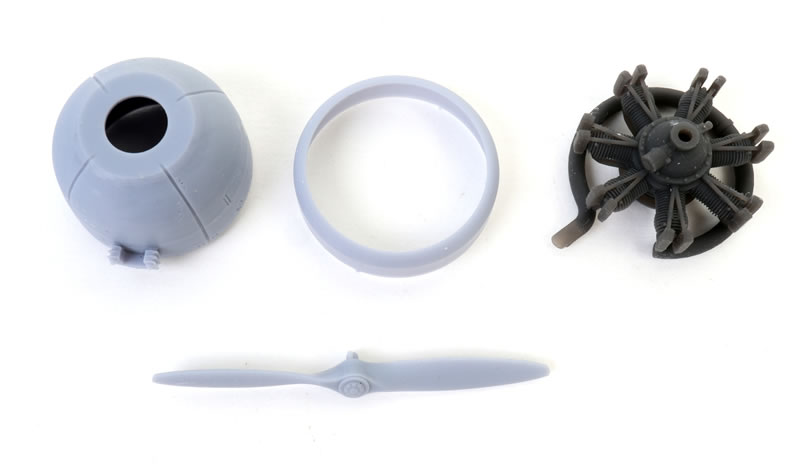
The engine is a single part but this in no way compromises detail. On the contrary, the cylinders, pushrods, crank case, magneto and exhaust ring look fabulous - and all in one 3d printed part. That's even better news as the engine sticks out the front of the fuselage with no cowling so you can admire your engine anytime you like!
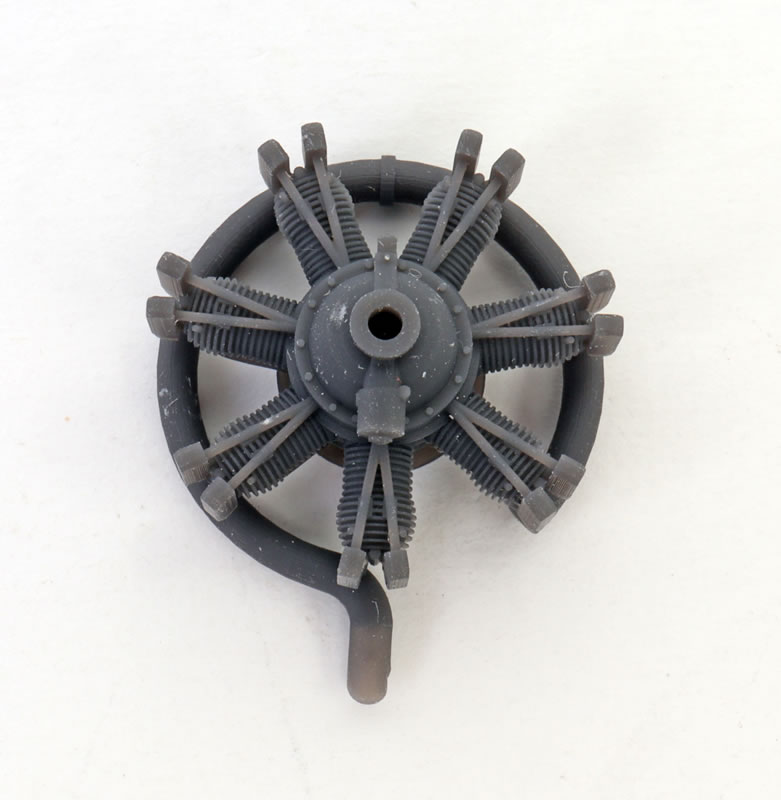
The windscreens are presented as 3d printed resin frames. The instructions suggest that you fill the frames with Krystal Klear or scratch build a replacement from clear plastic. I think leaving the frames as they are would be a valid option too, representing a really clean windscreen!
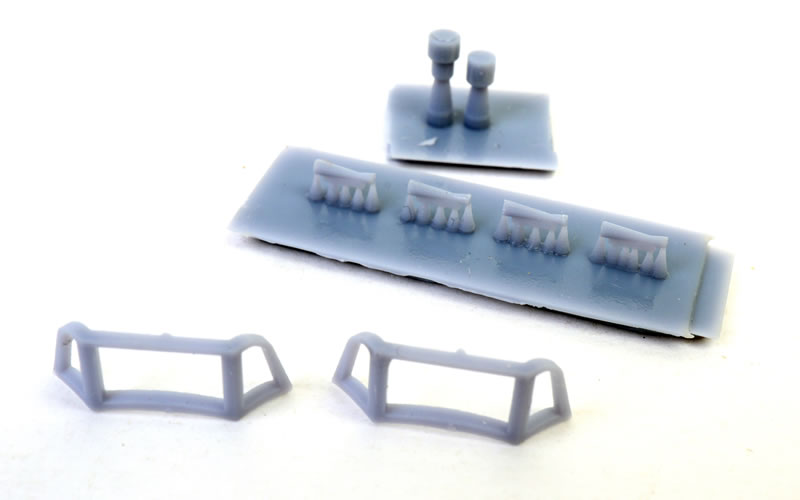
Alternative main wheels are offered.
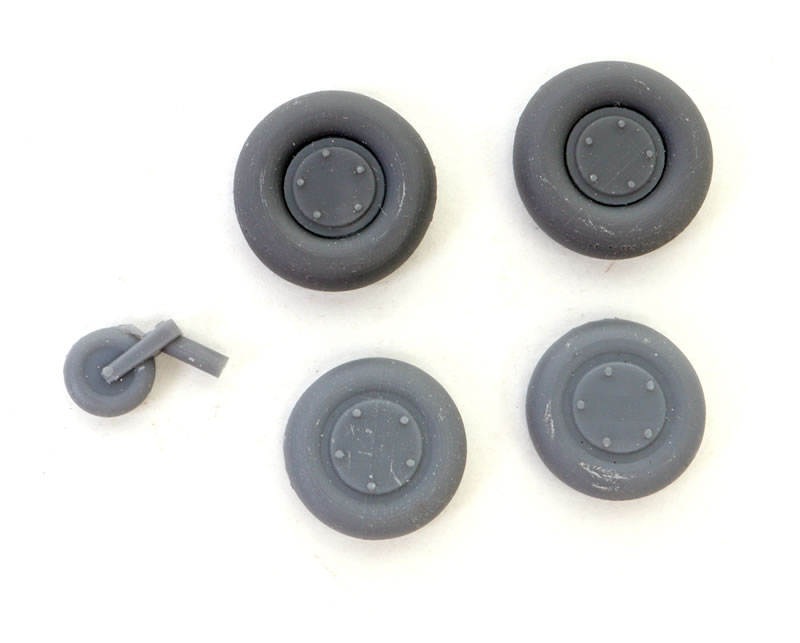
Anybody who has owned a Red Roo Models kit will attest to the wealth of detail and historical background included in the instructions. Their new Avro Cadet is no exception. 18 pages cover history, reference photos, colours and markings guide and assembly instructions.
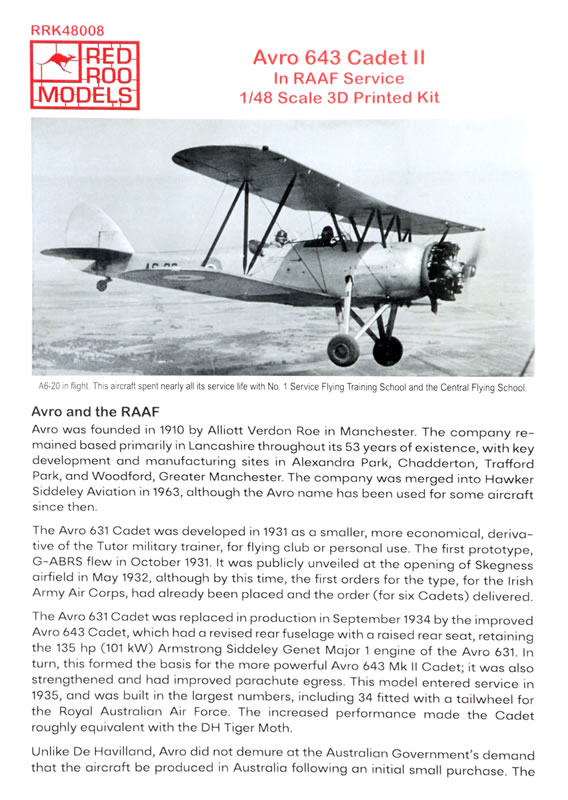
I count nine varied marking options on the decal sheet although Red Roo say there are 12. I'm happy to take their word for it.

The markings are described as digital decals. These feature continuous film over the entire sheet, so they will have to be carefully cut out close (but not too close) to the individual markings. The instructions also caution that the decals are very thin and delicate. Take some time to read the instructions for safe handling information.

The colour and registration of the markings look good. The markings themselves have a fine texture that does not extend to the carrier film.
Red Roo's 1/48 scale Avro 643 Cadet II in RAAF Service is an interesting offering that makes good use of its 3d printing technology.
The parts breakdown is quite clever and straightforward, making it suitable for modellers who have built only a few multimedia or biplane kits before.
The marking schemes are colourful and varied too.
If you want a complete collection of RAAF aircraft in 1/48 scale, you are one step closer with Red Roo Models' 1/48 Avro 643 Cadet II in RAAF Service.
Thanks to Red Roo Models for the sample.

Review Text & Images Copyright © 2025 by Brett Green
Page Created 4 February, 2025
Last updated
5 February, 2025
Back to HyperScale Main Page
Back to Reviews Page |
